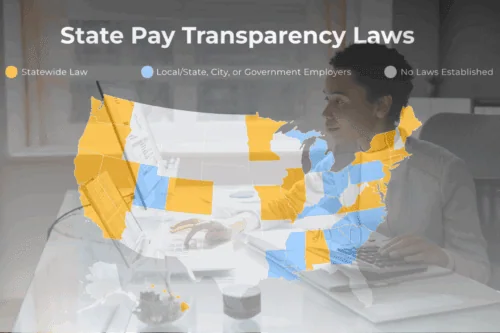Welcome to our essential guide on understanding and combating sexual harassment in the workplace. As you embark on your career journey, it’s crucial to be informed about your rights and the behaviors that constitute sexual harassment. This guide is designed to empower you with knowledge, from recognizing different forms of harassment to learning the steps you can take to report and prevent such conduct.
Why This Guide is Important for You
Understanding sexual harassment is fundamental whether you are entering the workforce for the first time or looking to ensure a safe work environment. This guide provides comprehensive insights, preventative strategies, and supportive resources to help safeguard your workplace dignity.
Join us as we explore the legal frameworks, real-life case studies, and proactive measures you can take to foster a respectful and inclusive work culture. Let’s equip ourselves to respond to and prevent sexual harassment, making our workspaces safer for everyone.
Understanding Sexual Harassment: Definitions and Forms
Sexual harassment involves unwanted, inappropriate, or offensive behavior with a sexual undercurrent. It is a form of discrimination that erodes workplace safety and respect. Here, we outline the primary forms this misconduct can take:
Quid Pro Quo Harassment
Translated from Latin, “quid pro quo” means “something for something.” In the workplace, this refers to situations where job benefits—such as promotions, raises, or even continued employment—are contingent upon the employee submitting sexual advances or requests.
Hostile Work Environment
This occurs when actions, communications, or behaviors of a sexual nature are so frequent or severe that they create an intimidating, hostile, or offensive work environment. Examples include:
- Unwanted touching or gestures
- Inappropriate jokes or comments
- Display of sexually explicit materials
Cyber Harassment
With the rise of digital communication, sexual harassment can also occur online. This might include sending unwelcome sexual messages, sharing offensive content, or making inappropriate video calls.
For more resources on the definitions and legal understanding of sexual harassment, educational institutions like Harvard University offer detailed guides and explanations.
This coverage lays the groundwork for deeper exploration into the legal frameworks and real-life instances of sexual harassment, fostering an informed community ready to combat this violation.
The Legal Framework Surrounding Sexual Harassment
In the United States, sexual harassment is regarded as a serious breach of civil rights under various federal laws. This section outlines critical legislation designed to protect individuals from sexual harassment:
Title VII of the Civil Rights Act of 1964
This foundational law prohibits employment discrimination based on race, color, religion, sex, and national origin. Importantly, it covers sexual harassment, offering recourse for victims to file complaints with the Equal Employment Opportunity Commission (EEOC).
The Violence Against Women Act (VAWA)
Reauthorized in various forms since its inception in 1994, VAWA includes provisions that specifically address sexual harassment, emphasizing protections in educational settings and workplaces.
State laws also play a significant role, often extending or refining the protections offered by federal legislation. For instance, some states have broader definitions or cover smaller employers not covered by federal statutes.
For further reading on sexual harassment policies and legal guidelines, resources like the United States Equal Employment Opportunity Commission provide comprehensive insights.
Recognizing these legal frameworks is crucial for both preventing sexual harassment and empowering victims to step forward. As we explore real-life incidents, it becomes clear why robust legal protections are essential.
Importance of Inclusive Practices at Work
Inclusive workplace practices are vital for preventing sexual harassment and fostering a safe environment. Here’s why these practices matter:
Creating a Supportive Culture
An inclusive culture respects diversity and promotes equality. When employees feel valued, the risk of harassment decreases. Additionally, staff are more likely to report inappropriate behavior.
Training and Education
Regular training on sexual harassment and diversity helps employees recognize and avoid harmful behaviors. Education empowers everyone to act responsibly.
Policies and Protocols
Clear policies against sexual harassment are essential. These should outline unacceptable behaviors and the steps for reporting incidents.
Open Communication
A channel for open and safe communication helps address concerns early and ensures that victims can speak up without fear of retaliation.
A supportive workplace that values all employees significantly reduces cases of sexual harassment.
For more insights into building inclusive environments, the Society for Human Resource Management offers resources and guidelines.
As we continue, we’ll examine real-life cases to understand better the impact of sexual harassment and the effectiveness of preventative measures.
Case Studies: Real-Life Incidents of Sexual Harassment
Examining real-world incidents clarifies the severe nature of sexual harassment and its impacts. Below are a few notable case studies presented anonymously:
High-Profile Corporate Case
A major tech company faced allegations when numerous employees reported a pattern of sexual advances by senior executives. The fallout led to public outcry and significant policy revisions within the company.
Academic Institution Scenario
At a well-known university, a professor was found guilty of harassing multiple students over several years. This case highlighted the need for thorough background checks and strict enforcement of conduct codes in educational settings.
Preventive Measures Against Sexual Harassment
To combat sexual harassment, organizations can implement a variety of preventive strategies. Here are practical approaches:
Comprehensive Policy Implementation
Developing and enforcing a clear sexual harassment policy is vital. This policy should be easily accessible and communicated regularly to all employees.
Educational Programs
Conducting training sessions focusing on understanding and preventing sexual harassment reinforces respectful workplace behavior. These sessions should be compulsory for all employees.
Safe Reporting Mechanisms
Establish confidential and secure channels for victims to report incidents without fear of retaliation. Ensuring anonymity can encourage more individuals to come forward.
Regular Reviews and Audits
Periodically reviewing policies and procedures ensures they remain practical and current with legal standards.
For additional guidelines on establishing preventive measures, resources such as the Occupational Safety and Health Administration provide valuable information.
As we look towards providing support and resources, it’s crucial to establish these foundational preventive tactics to safeguard workplace integrity and employee well-being.
Support and Resources for Victims
Victims of sexual harassment often need support and resources to cope with their experiences and seek justice. Below, we outline valuable tools and assistance available:
Counseling Services
Many organizations offer counseling services through employee assistance programs (EAPs). These services provide confidential support and guidance.
Legal Assistance
Victims can seek legal counsel to understand their rights and potential actions. Non-profit organizations and legal aid societies often provide free or low-cost services.
Support Groups
Joining a support group can help victims feel less isolated and more empowered. These groups provide a platform for sharing experiences and coping strategies.
Additionally, the Rape, Abuse & Incest National Network (RAINN) offers nationwide services, including a hotline for immediate assistance.
For those in educational settings, resources like the Office for Civil Rights in the Department of Education ensure that students have avenues to report and resolve incidents.
As we advance, everyone must know how to report and address instances of sexual harassment effectively.
How to Report Sexual Harassment
Knowing how to report sexual harassment is crucial for addressing and stopping unacceptable behaviors. Here’s a guide on effective reporting:
Internal Company Reporting
Most organizations should have a reporting system in place. Employees should report the incident to their human resources department or a designated officer.
Documentation of Incidents
Keeping detailed records of the harassment incidents, including times, dates, and descriptions, supports the report’s credibility. This information is critical during investigations.
External Agencies
Reporting can be escalated to external bodies if internal avenues are exhausted or not feasible. In the U.S., this includes the Equal Employment Opportunity Commission (EEOC), which handles complaints about workplace discrimination.
It is also helpful to check with local or state departments, which can provide additional resources and support. Reporting sexual harassment is a significant step towards solving it and preventing future incidents.
FAQs
Addressing frequently asked questions helps demystify aspects of sexual harassment and provides clear guidance on handling such situations. Here are responses to common inquiries:
What actions should I take if I’m being sexually harassed?
Document the incidents, seek support from human resources or a trusted individual, and consider legal advice if necessary.
Can a person of the same gender perpetrate sexual harassment?
Yes, sexual harassment can occur between any individual, regardless of their gender or sexual orientation.
What are the consequences for someone found guilty of sexual harassment?
Consequences can range from warnings and mandatory training to termination of employment and legal repercussions.
Are there preventative measures that can minimize the risk of harassment?
Establishing a clear policy, providing regular training, and fostering an inclusive culture are key strategies to prevent harassment.
Is verbal harassment considered as serious as physical harassment?
Yes, both forms are harmful and can create hostile work environments. All forms of harassment should be addressed promptly.
Conclusion
Understanding and preventing sexual harassment is crucial in creating safe and inclusive environments. By educating ourselves and others, implementing solid policies, and supporting victims, we can significantly reduce the prevalence of sexual harassment and foster a culture of respect and dignity for all. We encourage you to join our diversity job board to access resources, training material, and tools for fostering an inclusive and safe workplace. Together, we can build a workplace where everyone is valued and protected.




